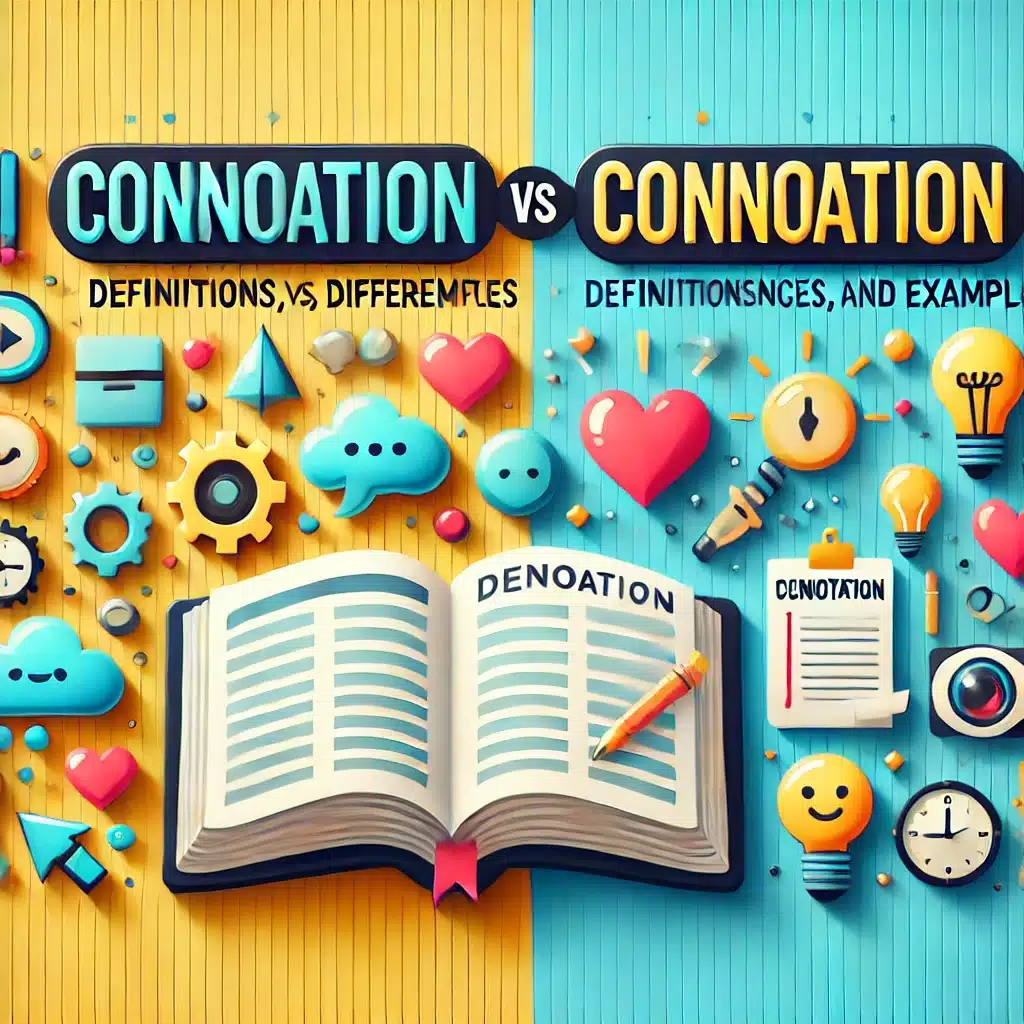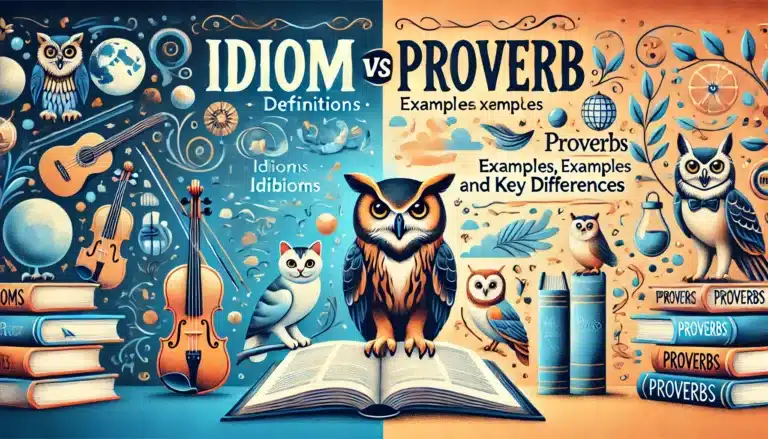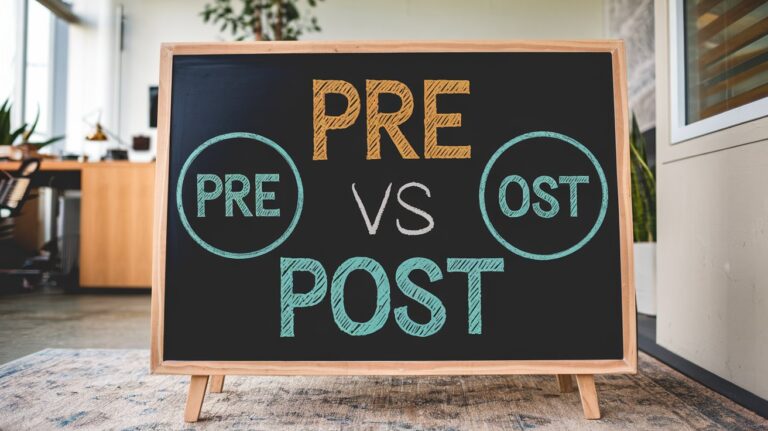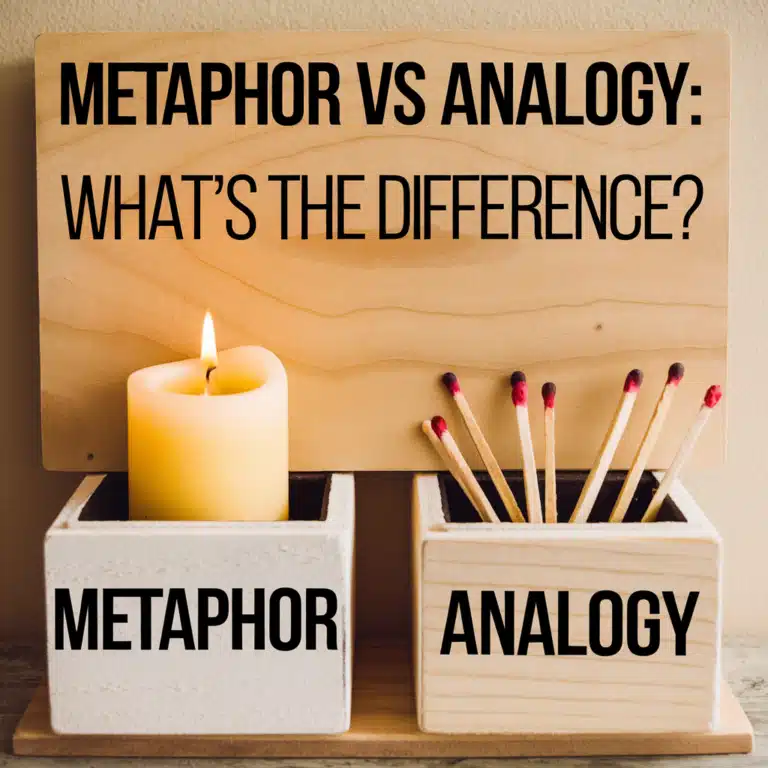Connotation vs Denotation: Definitions, Differences, and Examples
Words are more than just strings of letters—they carry layers of literal meanings and emotional undertones. Understanding the key differences between connotation vs denotation is crucial for clear communication and nuanced expression. This article dives deep into these two linguistic terms, exploring their definitions, applications, and real-world examples.
Why Do Connotation and Denotation Often Cause Confusion?
Language is complex, blending dictionary definitions with emotional layers shaped by personal and cultural experiences. Here’s why confusion often arises:
- Overlapping Usage: Words like “home” can simultaneously evoke feelings of warmth (positive connotation) while maintaining its literal definition: “a place of residence.”
- Cultural Context: The cultural implications of certain words differ across regions. For instance, “freedom” may have varying emotional significance depending on historical and societal norms.
- Subjective Interpretation: People interpret words differently based on their personal experiences and emotional tone, leading to misunderstandings.
By understanding these factors, you can bridge the gap between literal meanings and emotional interpretations, improving your usage in communication.
What Is Connotation?
Definition of Connotation
Connotation refers to the implied meaning of a word—the emotional, cultural, or personal associations it carries beyond its dictionary definition. Unlike denotation, which is fixed, connotation is fluid and varies depending on context.
Types of Connotations
| Type | Description | Example |
|---|---|---|
| Positive Connotation | Evokes pleasant or favorable associations. | “Youthful” vs. “Childish” |
| Negative Connotation | Suggests unfavorable or critical meanings. | “Cheap” vs. “Affordable” |
| Neutral Connotation | Context-dependent with no inherent emotional tone. | “Academic” or “Bookish” |
Why Connotation Matters
Connotations influence how messages are perceived:
- Advertising: Brands use words with positive connotations (e.g., “luxurious”) to evoke desire.
- Politics: Terms like “reform” can carry vastly different emotional tones depending on the audience.
- Daily Life: In conversation, your choice of words (e.g., “frugal” vs. “stingy”) affects your message’s reception.
What Is Denotation?
Definition of Denotation
Denotation is the literal meaning of a word, as defined in a dictionary. It is objective, factual, and universally recognized, making it the foundation of clear communication.
Read More About : Metaphor vs Analogy: What’s the Difference?
Characteristics of Denotation
- Fixed Meaning: Unlike connotation, denotation doesn’t change with context.
- Neutral Tone: It lacks emotional or cultural associations.
- Clarity: It ensures precision in technical and formal settings, such as legal documents.
Why Denotation Is Important
Denotation is essential for:
- Objective Communication: Scientific papers and contracts rely on literal meanings for accuracy.
- Avoiding Misinterpretation: It anchors language in shared understanding.
Key Differences Between Connotation and Denotation
| Aspect | Connotation | Denotation |
|---|---|---|
| Definition | Implied, emotional, or cultural meanings. | Literal, dictionary-based meanings. |
| Flexibility | Context-dependent and fluid. | Fixed and universal. |
| Emotional Layers | Includes positive, negative, or neutral tones. | Lacks emotional or subjective associations. |
| Usage | Found in creative and informal contexts. | Essential in formal and technical settings. |
Examples Highlighting the Differences
- “Snake”:
- Denotation: A legless reptile.
- Connotation: Treachery or danger (negative connotation).
- “Freedom”:
- Denotation: The state of being free.
- Connotation: May evoke feelings of hope, pride, or rebellion depending on the cultural context.
Real-World Examples of Connotation and Denotation
In Literature
Authors layer meanings into their works using figurative language and word associations. For instance, in Shakespeare’s Romeo and Juliet, the word “night” symbolizes danger and secrecy (implied meaning) while retaining its literal definition.
In Advertising
Marketing campaigns rely heavily on positive connotations to influence consumer behavior. For example:
- “All-natural ingredients” (evokes trust and health).
- “Budget-friendly” (avoids the negative connotation of “cheap”).
In Daily Conversations
- Neutral meaning: “She’s academic.”
- Implied context: “She’s bookish” (can imply excessive focus on studies).
In Politics
Political rhetoric often leverages emotional tones to sway opinions. Words like “freedom,” “progress,” or “reform” carry emotional layers that resonate with different demographics.
In Media and News
News outlets carefully choose words to shape public perception, often balancing objective tones with subtle meanings to maintain credibility.
How to Use Connotation and Denotation Effectively
In Writing
Use emotional layers to enhance storytelling while ensuring the literal meaning of your words is clear. Example: “Her smile was sunshine” combines figurative language (positive connotation) with an evocative image.
In Conversations
Pay attention to your audience’s cultural norms and personal experiences. Choose words that minimize the risk of misinterpretation.
In Branding
Brands should align their word choices with their target audience’s expectations. For example, a luxury brand might use terms like “exclusive” or “bespoke” to evoke associative meanings of prestige and quality.
Etymology and Historical Evolution of Connotation and Denotation
Etymology of Connotation
Derived from the Latin connotare (“to mark together”), connotation originally referred to shared or inferred meanings. Its usage evolved alongside language evolution to include emotional and contextual layers.
Etymology of Denotation
From the Latin denotare (“to indicate”), denotation was rooted in logic and philosophy, emphasizing precise and objective meanings. It remains foundational to modern language devices like dictionaries.
Frequently Asked Questions (FAQs)
Can a word have both positive and negative connotations?
Yes, depending on the context. For example, “independent” can imply self-reliance (positive) or isolation (negative).
How do cultural differences impact connotations?
Words like “spicy” may connote excitement in some cultures but discomfort in others, reflecting societal norms.
How can I identify the connotation of a word?
Consider the contextual meaning and emotional response it evokes.
Why is understanding connotation important in persuasive writing?
It allows writers to connect emotionally with their audience while guiding interpretation.
Conclusion
Mastering the balance between connotation vs denotation enhances your ability to communicate effectively. By understanding the literal meaning, emotional layers, and cultural implications of words, you can wield language as a powerful tool for clarity and persuasion.







